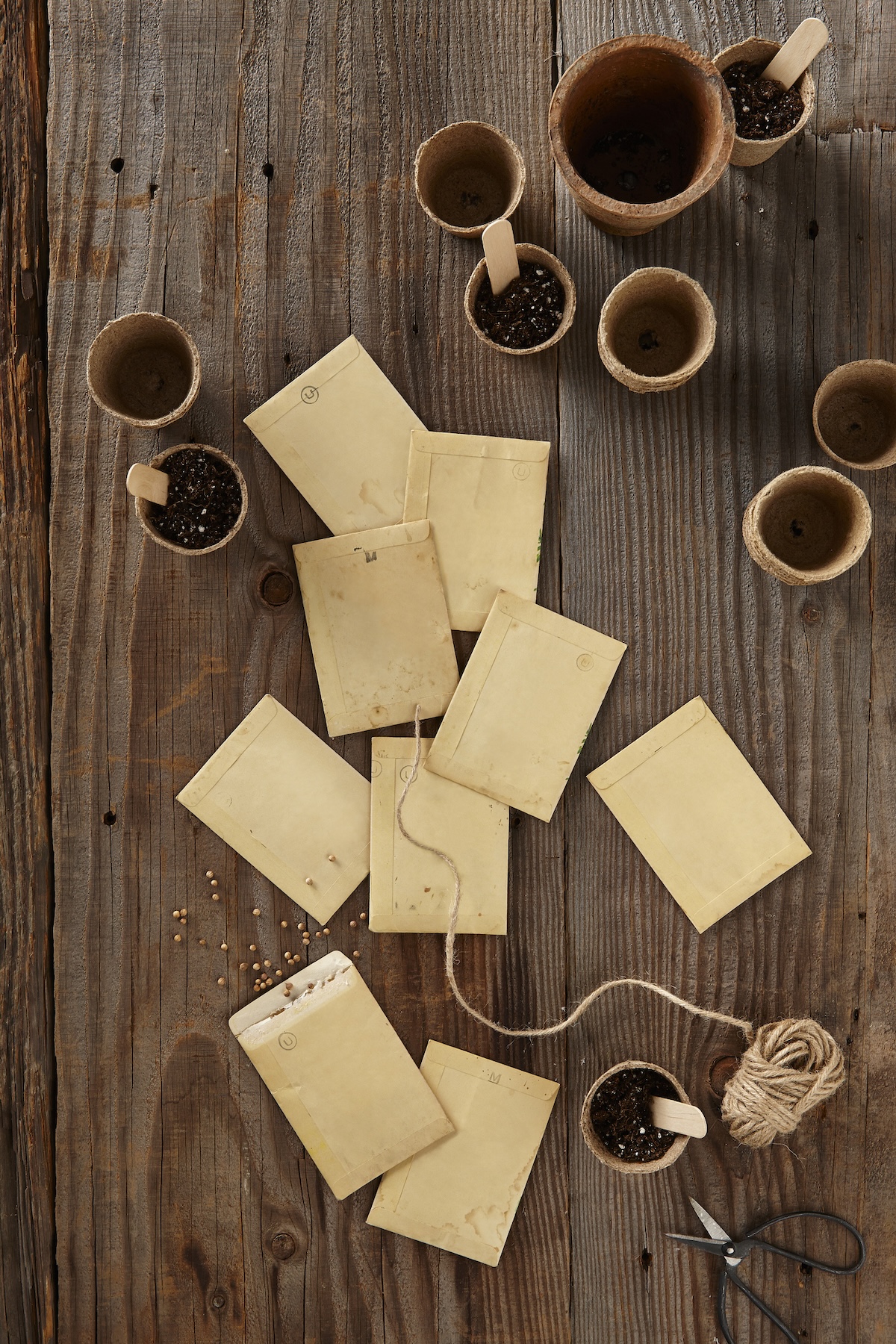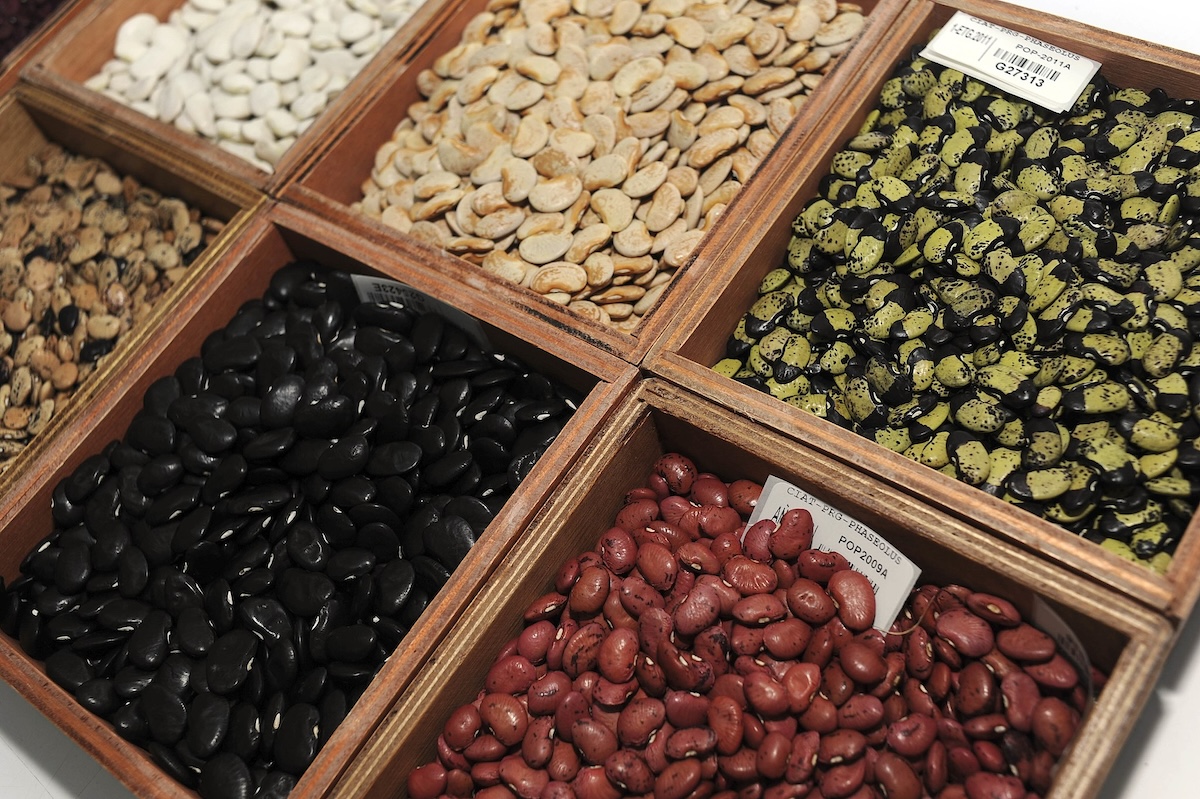

We may earn revenue from the products available on this page and participate in affiliate programs. Learn More ›
The best things in life are free, especially for your garden. After 12 years selling seeds throughout the United States and Canada, Petra Page-Mann and Matthew Goldfarb, who own the organic seed company Fruition Seeds based in upstate New York, have decided to give away their seeds instead. As stated on their website, “Friends, rather than selling and shipping seeds, we now share seeds as an embodied gift practice.”
After reaching $22 million in sales in 2022, the company has ceased selling and shipping seeds. On August 27, 2024, they started giving away hundreds of varieties of seeds. The company is transitioning away from a for-profit business to highlight how seeds are a gift of nature and that everyone should be able to enjoy them. The couple intends to distribute free garden seeds to a broad community by hosting events and connecting to existing seed libraries and seed exchanges.
Page-Mann and Goldfarb are leading the way in the free seed movement. In addition to connecting with their unique organization, gardeners can find various ways to gather free vegetable seeds and free flower seeds, including taking advantage of corporate and nonprofit giveaways, visiting seed libraries, joining seed exchanges, collecting sample packets, and saving your own at home.
1. Take advantage of seed giveaways.
Fruition Seeds isn’t the only organization giving away free seeds. With a little research, you can identify companies, nonprofits, and government offices offering giveaways. This is common when organizations want to encourage planting vegetation to attract pollinators, such as Tennessee Department of Transportation’s (TDOT) Project Milkweed giveaway during National Pollinator Week this year. Search online for these types of promotions and follow the organizations on social media to stay abreast of upcoming giveaways.
Garden supply stores also might give out free seeds. Ask at the checkout counter if they have any free seed samples for you. Be sure to follow the store on social media and to sign up for their newsletter and loyalty and rewards programs to be the first to find out about contests and giveaways for seed packets and other gardening supplies. Sometimes, seed companies also give out seed packets as part of a contest or promotional campaign.
2. Visit a seed library.
If you’ve ever walked into your local library and noticed what looks like a mini old-fashioned card catalog, then you might have access to a seed library. Just like the practice of borrowing books from the library, patrons of a seed library can “borrow” seeds by taking seed packets and then returning the same amount of seeds later. Many people bring in seeds they collect after they harvest their flowers or produce for the season.
Having access to a seed library allows you to experiment with growing different types of plants in your garden. Along with the seed library, many local libraries also offer informative presentations and other resources about gardening. Contact libraries in your area to see if they have a seed library on site. The Seed Library Social Network is another helpful resource for locating seed libraries.

3. Grab free sample packets.
Keep an eye out for people giving away free sample packets of seeds. Look for them at obvious places like public gardens and gardening clubs, but also less obvious spots like corporate conferences, charitable events, weddings, bridal and baby showers, and birthday and graduation parties in which seed packets are given out as promotional items or party favors.
Other possible sources are environmental celebrations for Earth Day and Arbor Day hosted by the local government, park service, or nonprofits like Sierra Club where groups give out seed packets to encourage nature-related activities like gardening. Be sure to also check with your local cooperative extension office in your state. Finally, thumb through gardening and seed catalogs to check for any seed samples hidden inside.
4. Join a community seed exchange.
Another way to gather seeds for growing free plants is to join a seed exchange, also called a seed swap. These communities—either online or in person—allow a group of people to exchange seeds with one another. Participants add seeds to the exchange that they don’t want or need so that others can use them, while walking away with free seeds they can sow in their garden. With local exchanges, the group will meet in person to trade seeds. If organized online, members set up a long-distance exchange to send free seeds by mail.
Some popular seed exchanges include Seed Savers Exchange, Houzz Seed Exchange, Great American Seed Swap/Trade Project, and Seeds of Diversity. It’s also possible to find local seed swaps by searching online, such as in Facebook groups, Reddit, Nextdoor, and Craigslist, or by asking gardening clubs and environmental organizations in the region.
Of course, you can also start a seed swap in your area and meet like-minded neighbors to exchange seeds and gardening tips. Some people even set up the exchange so that each member of the seed circle is assigned specific seeds to collect each season. For example, one member might be in charge of growing tomatoes and saving tomato seeds to contribute to the swap, while another member might focus on cucumbers.

5. Save your own seeds.
The most direct way to acquire free seeds is to save your own at home. Simply collect and dry seeds or seed pods from herbs, vegetables, and flowers grown in your own garden to use in the future. You also can save seeds from the produce you purchase from the grocery store or farmers market, such as peppers, tomatoes, and zucchini.
To save flower seeds, cut flower heads once their seed pods have dried out, or shortly before. Then place the flower heads on wax paper to dry for about a week. Remove the seeds from the flower and separate them from the pods or husks and other plant material.
To save fruit and vegetable seeds, select produce that is fully ripe but not rotten. Separate individual seeds from the surrounding plant tissue. Use a colander to separate unwanted plant material from large seeds. Then place the seeds on wax paper in a cool, dry place away from direct sunlight for a week. Large seeds like pumpkin, bean, and squash will dry in a dehydrator set at no higher than 100 degrees Fahrenheit for about 5 hours. Never dry seeds in an oven because even the lowest temperature setting is too hot.
Store dried seeds in paper seed envelopes. It’s helpful to label each packet with the name of the seed and the year it was harvested. Store the packets inside an airtight container that is kept in a cool, dark, and dry location, such as a refrigerator. Many types of seeds—such as beet, broccoli, cucumber, petunia, and zinnia—last for several years, but do some quick research to make sure.
